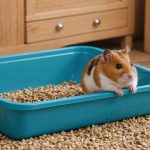Importance of Supporting Native Butterfly Habitats
The role of butterflies in ecosystems is essential. Butterflies contribute significantly to biodiversity enhancement by serving as pollinators for a wide range of plant species. This natural pollination process is crucial for the reproduction of many plants, ultimately supporting the entire ecosystem.
When it comes to UK gardening, choosing native butterfly habitats has numerous benefits. Native plants are generally more robust and adapted to the local climate, making them less resource-intensive to maintain. Moreover, they serve as vital food sources and shelter for local wildlife, promoting balanced ecosystems.
Also to read : Unlocking the Benefits of Night-Time Curfews: A Boon for Urban Wildlife in the UK
Healthy gardens play a pivotal role in fostering sustainable environments. By integrating native plants, gardeners can reduce the need for chemical fertilizers and pesticides, which are often harmful to both butterflies and other beneficial organisms. A diversity of plants ensures that butterflies have access to food throughout their lifecycle, from larvae to adult.
Expanding native butterfly habitats in UK gardening practices not only invigorates local biodiversity but also cultivates vibrant and thriving gardens. Embracing sustainability initiatives, like focusing on native flora, can aid in restoring ecological balance, enhancing the beauty and function of garden spaces.
Additional reading : Protecting native wildlife: the role of uk traffic laws in reducing roadkill
Must-Have Plants for UK Gardens
Enhancing your UK garden with the best plants for butterflies can significantly contribute to biodiversity. Focusing on pollinator-friendly plants supports the lifecycle of butterflies while enriching garden aesthetics.
Nectar-Rich Flowers
Among the top choices, Buddleja, commonly known as the Butterfly Bush, stands out for its profusion of nectar-rich blooms. These popular species are incredibly attractive to butterflies, ensuring a steady influx of these fluttering creatures. For best results, plant in sunny locations and prune annually to manage growth and prolong flowering.
Host Plants for Caterpillars
Alongside nectar sources, consider integrating Nettles and Cow Parsnip as they serve as host plants for butterfly caterpillars. Such plants are crucial for the early stages of the butterfly lifecycle. To foster a nurturing environment, allocate a section of your garden to these species, ensuring sufficient space for larval development.
Ground Covers and Grasses
Incorporating ground covers like Creeping Thyme and ornamental grasses adds texture and offers shelter and protection for butterflies. These elements create ideal microhabitats, reducing soil erosion and maintaining moisture. Strategically place these plants to bridge flowerbeds and pathways, enhancing both form and function in your garden design.
Planting and Maintenance Guidelines
To achieve a flourishing butterfly haven, implementing effective plant care tips is essential. Begin by selecting native flora, which are inherently more adaptable, requiring minimal resources to thrive. Plant these species in areas that mirror their natural habitat conditions, focusing on sunlight and soil type.
During planting, ensure sufficient spacing to prevent overcrowding, which can hinder plant growth and airflow, reducing the risk of disease. Regularly water your garden, paying close attention to weather conditions, to maintain consistent moisture levels.
Garden sustainability benefits from strategic seasonal maintenance. In autumn, apply mulch to retain soil warmth and moisture, promoting beneficial microbial activity. Additionally, timely pruning prevents invasive growth, fostering a tidy and productive environment for butterflies and other pollinators.
Encourage biodiversity gardening by incorporating a variety of species to ensure year-round attractions for butterflies. Diversification is crucial; it not only enhances the visual appeal but also offers a stable food supply for butterflies at different lifecycle stages. Introduce companion plants to deter pests naturally and reduce the need for harmful chemicals.
Incorporate organic compost to enrich soil health, facilitating robust plant development and resilience against environmental stressors. By following these guidelines, you set the stage for a vibrant, sustainable butterfly-friendly garden.
Additional Resources and References
Fostering a butterfly-friendly garden requires ongoing learning and support from diverse resources. Engaging with gardening resources is vital for sustainable planning and effective implementation.
Recommended Books and Guides
Consider delving into notable titles on butterfly gardening and ecology. These essential reads provide in-depth insight and actionable tips for fostering vibrant UK gardens. While specific book details need to be explored independently, focus on guides emphasizing native plants. Access to detailed care instructions ensures plants thrive in their natural habitats.
Local Conservation Organizations
Engaging with UK-based wildlife and butterfly charities offers community support and expertise. Volunteering can enrich your understanding while directly contributing to biodiversity efforts. Building connections with local ecological initiatives strengthens adaptation strategies, promoting garden resilience.
Online Platforms and Tools
Leverage websites for tracking local butterfly populations, which aid in evaluating biodiversity enhancement progress. For precise plant selection, apps for identifying native plant species ensure tailored garden plans. Participating in online forums allows gardener support and knowledge exchange—providing continuous learning and troubleshooting platforms for enthusiasts.











